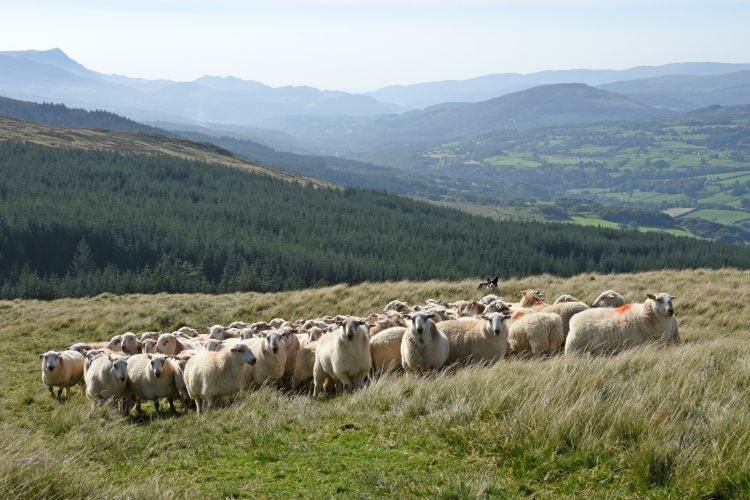
Researchers are exploring the feasibility of developing genomic breeding values in the hill sheep sector by taking advantage of a large DNA database.
The use of genomic breeding values is well established in the dairy sector and developing quickly in the beef industry; however, this is not the case for the UK sheep sector.
But a new development as part of Hybu Cig Cymru's (HCC) Hill Ram Scheme wants to create genomic breeding values in the sheep sector by using a unique DNA database built up during the project.
Livestock breeding involves the identification and selection for mating of those animals with the best genetics for a specific breeding objective.
Traditionally the breeding values produced for breeders with performance recorded flocks have been predictions of an animal’s genetic merit based on their performance and that of their relatives compared to other sheep in the flock.
A recent feasibility study conducted as part of HCC's Hill Ram Scheme shows that by accounting for genetic linkage between flocks, this prediction can go further.
For example, researchers could report genetic merit relative to the wider recorded population, offering breeders increased accuracy and confidence in genetics.
Genomic Estimated Breeding Values (EBVs) are used in the same way as non-genomic breeding values and contribute to the breeding index that has been developed for hill sheep.
HCC said: "We know each animal gets half of its genetic material from each parent and when a lamb is born it is assumed that its breeding potential sits halfway between that of its parents.
"In reality some lambs will get more of the better genes from each parent and some will get worse ones.
"One way to enhance our breeding evaluations would be to move away from making predictions about the genes we think an animal has inherited, to using genomic information that tells us about the actual genes it possesses."
As part of the scheme, tissue samples have been collected from lambs, ewes and rams to extract DNA sequences (genotypes) in order to determine the parentage of lambs.
While these genotypes allow verification of parentage and tell breeders about individual genes that have may have a large impact on performance, they can also be used to inform breeding evaluations about the thousands of tiny bits of genetic variation on the DNA strand that when combined contribute for the overall genetic merit of the animal.
"For breeding animals, the inclusion of their genotype and performance data into a genetic evaluation isn’t the end of the story," HCC explained.
"As with conventional evaluations, as an animal accumulates progeny records the genomic component of its breeding values will gradually diminish.
"As accuracy values rise, estimates of genetic merit will get closer to the true breeding value of the individual enabling breeding decisions to be made with greater confidence.
Genomic information can provide a wealth of intelligence and insight but it is particularly useful for traits which take a long time to be assessed, such as ewe longevity, traits which are only expressed in females and traits which are expensive to record, such as meat quality.
HCC said this type of work and study was the first of its kind to have been undertaken in the world, putting Welsh farmers and breeders at the forefront of livestock breeding and genetic information.
The levy board said: "We are proud that we have been able to complete this work through the Hill Ram Scheme and demonstrate Wales’ ability as leaders in sustainable and effective hill farming."
"The Hill Ram Scheme has been a 5-year initiative to empower hill farmers and breeders with genetic information through the use of the latest DNA recording technology.
"This has enabled performance recording to proceed without disrupting their hill management systems by allowing detection of parentage by matching the DNA of the ram, the ewe and lambs."
